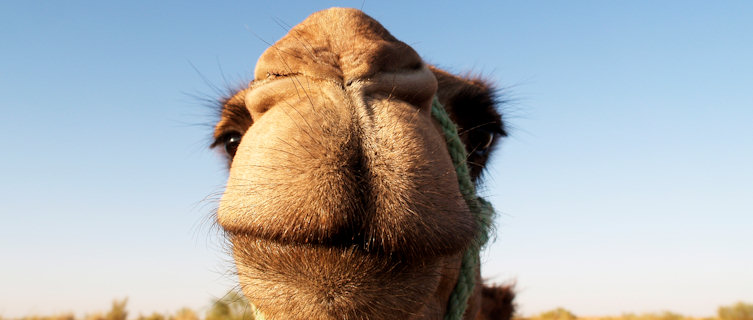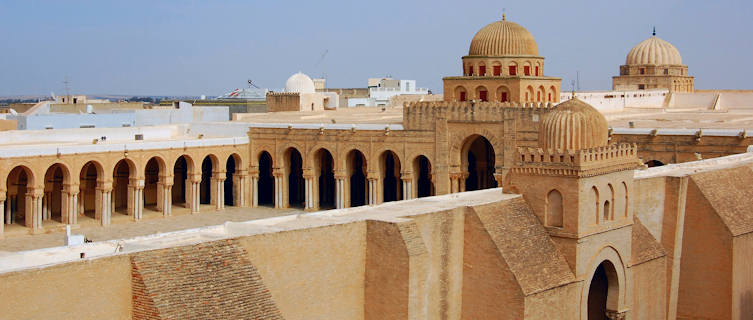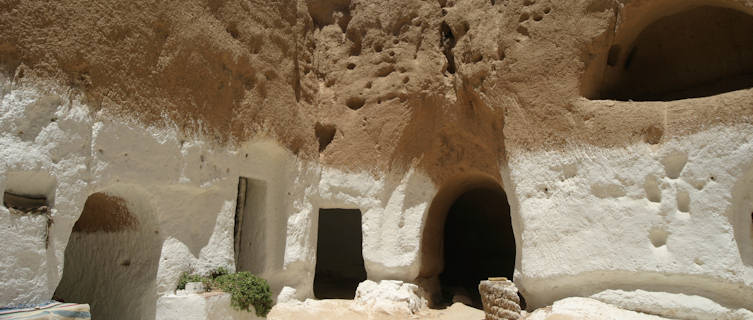Tunisia Pottery
North Africa's smallest country packs in enough diversity for a continent. Vestiges of former rulers dot the landscape: the remains of the mighty city-state of Carthage; Roman ruins that demonstrate this was Rome's richest imperial province; medieval medinas (walled cities) built at the beginning of the Arabic era; and elegant 19th century French colonial boulevards. The country's cuisine is also a delicious hotchpotch - French, North African, Middle Eastern and Turkish.
Beautiful beaches punctuate its 1,400km (875 miles) of Mediterranean coast. In the south lie the undulating Sahara, salt lakes and otherworldly Berber architecture, used as locations for Star Wars and the English Patient. In the north, mountains are cloaked in cork forest, while the Cap Bon peninsular and central Tunisia are rich in fruit trees, olive groves and vineyards.

Beautiful beaches punctuate its 1,400km (875 miles) of Mediterranean coast. In the south lie the undulating Sahara, salt lakes and otherworldly Berber architecture, used as locations for Star Wars and the English Patient. In the north, mountains are cloaked in cork forest, while the Cap Bon peninsular and central Tunisia are rich in fruit trees, olive groves and vineyards.

Camel Ride
This is Arabia at its most relaxed. Women's rights are better served than anywhere else in the Arabic world. Alcohol is freely available. After independence in 1956, Tunisia was ruled for three decades by Habib Bourguiba, a great paternalist and moderniser. Since his fall, President Zine El Abidine Ben Ali has continued along a similar path, focusing on a separation of state and religion, exerting strict media control and discouraging Islamic fundamentalism and any type of opposition.

Great Mosque Of Kairouan
Tunis, the vibrant yet laid-back capital of Tunisia, has managed to hold on to its own identity, where most other Tunisian cities sold their soul to tourism long ago.
Here the street scene is decidedly Tunisian: old men with red chéchias (scullcaps) and a bunch of jasmin blossoms behind their ear watch the young go past in jeans and shirts. The culture is Arab and African, but with so much coastline also clearly Mediterranean, traditions run strong and yet Tunisians are more liberated than their North African neighbours, and their Arabic is constantly interspersed with French.

Matmatas Underground Home
The city centre is even physically divided in two distinct quarters: the old Arab medina and the ville nouvelle (new town) created in colonial times by the French.
All roads lead to Rome, but in the Tunis medina they all seem to lead to the Zeytouna Mosque, built in 732AD. Founded by Arabs in the 8th century around the vast mosque, it is one of North Africa's most stunning medinas. The complicated maze of alleys and souks, hiding a wealth of Islamic monuments, is the city's historic and spiritual heart.
The main artery of the new town is the elegant avenue Habib Bourguiba, with its well-kept palm trees, café terraces and patisseries. The contrast with the medina could not be greater: European-style boulevards, white colonial architecture, the hubbub of offices and young people going to the movies or shopping for casual wear.
In the suburbs are the ruins of the once wealthy Phoenician-Roman city of Carthage, founded by the legendary Dido in 814BC, who Virgil involved in a romance with Aeneas, which drove her to suicide. This is the city of the great military leader Hannibal who crossed the Alps with his elephants.
Nearby is Tunisia's most beautiful village, Sidi Bou Said, which inspired and still inspires many artists, and La Marsa with its gorgeous white-sand beaches.
Read more: http://www.worldtravelguide.net/tunisia#ixzz1BGwfbKlG










0 comments:
Post a Comment